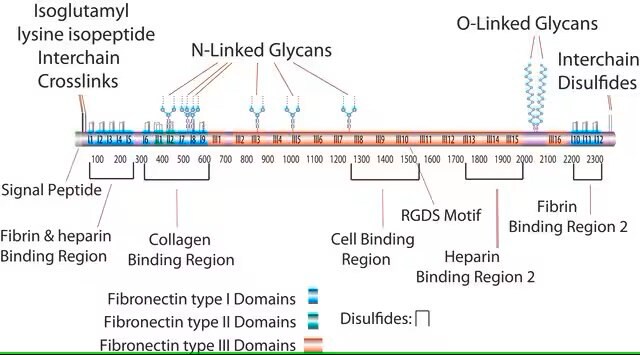F4759
Bovine Fibronectin
from bovine plasma, powder, suitable for cell culture
Synonym(s):
Fibronectin
About This Item
Recommended Products
Product Name
Fibronectin bovine plasma, powder, BioReagent, suitable for cell culture
biological source
bovine plasma
Quality Level
sterility
sterile
product line
BioReagent
form
powder
mol wt
~450 kDa
packaging
pkg of 1 mg
pkg of 2 mg
pkg of 5 mg
concentration
≥1 mg protein/mL
technique(s)
cell culture | mammalian: suitable
Looking for similar products? Visit Product Comparison Guide
General description
Application
- Used for coating the glass coverslips for the culture of decidual stromal cells (DEC)[5]
- Cell movement assays (culture plates were coated with fibronectin)[6]
- Cell spreading and immunofluorescence[7]
- Protein specificity[8]
- Integration of sensor films into microfluidic chips[9]
- Histological and Immunohistochemical (IHC) analyses[10]
- Used in primary cell cultures from patients with lung carcinoma[11]
Biochem/physiol Actions
Caution
Storage Class
11 - Combustible Solids
wgk_germany
WGK 3
flash_point_f
Not applicable
flash_point_c
Not applicable
ppe
Eyeshields, Gloves, type N95 (US)
Choose from one of the most recent versions:
Certificates of Analysis (COA)
Don't see the Right Version?
If you require a particular version, you can look up a specific certificate by the Lot or Batch number.
Already Own This Product?
Find documentation for the products that you have recently purchased in the Document Library.
Customers Also Viewed
Articles
Fibronectin (FN) plays crucial roles in extracellular matrix fibril assembly and cellular interactions.
Cancer stem cell media, spheroid plates and cancer stem cell markers to culture and characterize CSC populations.
Protocols
Dilute fibronectin for cell attachment, varying per cell type. Coating protocol, products, and FAQs provided.
Our team of scientists has experience in all areas of research including Life Science, Material Science, Chemical Synthesis, Chromatography, Analytical and many others.
Contact Technical Service











